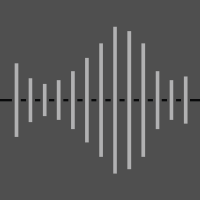Topic Editors


Environmental Noise Prediction, Measurement and Control
Topic Information
Dear Colleagues,
Noise pollution impacts millions of people on a daily basis. Long periodic noise or excessive noise exposure can cause damage to people, both physically and psychologically. In addition, noise pollution can also contribute to the health threat to animals and wildlife, both on land and in the sea. Therefore, scholars around the world have been dedicated to minimizing noise to an acceptable level.
Sound is intrinsically a mechanical wave transmitted in the atmosphere or underwater. In the past 10 decades, researchers have been devoted to sound prediction and measurement in open or enclosed environments and efficient sound-mitigating methods.
The acoustic modelling and simulation methods include the analytical solution, finite/infinite element methods, statistical energy analysis and CFD simulations. Nowadays, as artificial intelligence is flourishing and booming in interdisciplinary research, the data-driven and physically-informed computing of acoustics can be envisioned as an emerging and promising direction. The sound measurement includes every type of sound tests, such as long-term or short-term monitoring. New techniques should be required to separate the mixed sound into individual sources through single/multi-channel blind source separation to identify and quantify the main source, which contributes most among all sources. Sound field reconstruction can be obtained through the sound-array test and beam-forming algorithm or acoustic holography. However, innovative sound visualization methods in open or enclosed spaces are worthy of attention. Currently, noise control technology can be divided into active noise cancellation and passive noise reduction. The active method is more dependent on algorithm and control logic, while the passive method relies more on the performance of the sound insulation/absorption material. The combination of active and passive control methods using fuzzy theory or optimization methods should be treated with equal attention.
This Topic aims to bring together first-class articles in the field of noise prediction, measurement and control. Both experimental and modeling of acoustic studies for enclosed (houses, buildings, schools, vehicles, subways, trains, etc.) and open environments are welcomed. This Topic is expected to attract widespread attention and will have an excellent impact on the field of environmental acoustics. The potential topics include (but are not limited to):
- Reviews on environmental noise.
- Computation or simulation of environmental acoustics.
- Influence of noise on human or wildlife behavior.
- Measurement techniques for sound location and identification.
- Long-term monitoring solutions and key techniques of environmental noise.
- Algorithm for active/passive noise control.
- Artificial intelligence for environmental noise prediction and control.
- Blind sound source separation.
- Denoising techniques for background noise.
Dr. Bowen Hou
Dr. Jinhan Mo
Topic Editors
Keywords
- traffic noise
- wheel–rail noise
- airborne noise
- underwater acoustics
- sound source identification
- sound source location
- noise signal decoupling
- sound wave reconstruction
- noise mitigation
- noise cancellation
Participating Journals
| Journal Name | Impact Factor | CiteScore | Launched Year | First Decision (median) | APC | |
|---|---|---|---|---|---|---|

Acoustics
|
2.1 | 4.0 | 2019 | 16.3 Days | CHF 1600 | Submit |

Environments
|
3.7 | 5.9 | 2014 | 23.7 Days | CHF 1800 | Submit |

Remote Sensing
|
5.0 | 7.9 | 2009 | 23 Days | CHF 2700 | Submit |

Sensors
|
3.9 | 6.8 | 2001 | 17 Days | CHF 2600 | Submit |

Vehicles
|
2.2 | 2.9 | 2019 | 22.2 Days | CHF 1600 | Submit |

MDPI Topics is cooperating with Preprints.org and has built a direct connection between MDPI journals and Preprints.org. Authors are encouraged to enjoy the benefits by posting a preprint at Preprints.org prior to publication:
- Immediately share your ideas ahead of publication and establish your research priority;
- Protect your idea from being stolen with this time-stamped preprint article;
- Enhance the exposure and impact of your research;
- Receive feedback from your peers in advance;
- Have it indexed in Web of Science (Preprint Citation Index), Google Scholar, Crossref, SHARE, PrePubMed, Scilit and Europe PMC.

